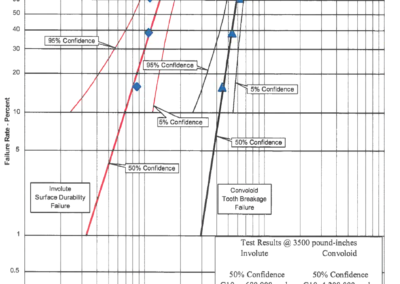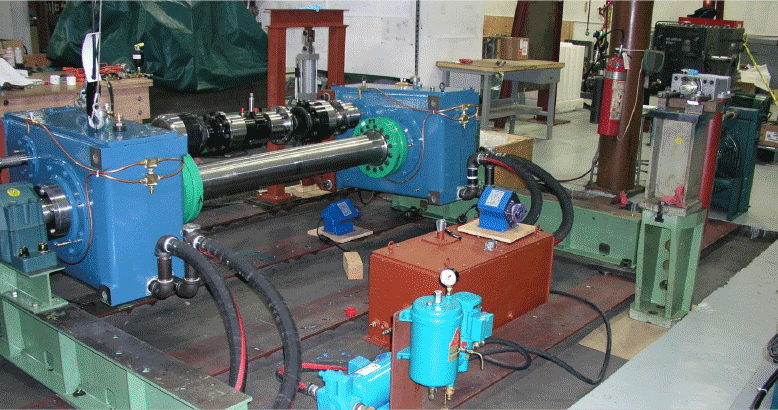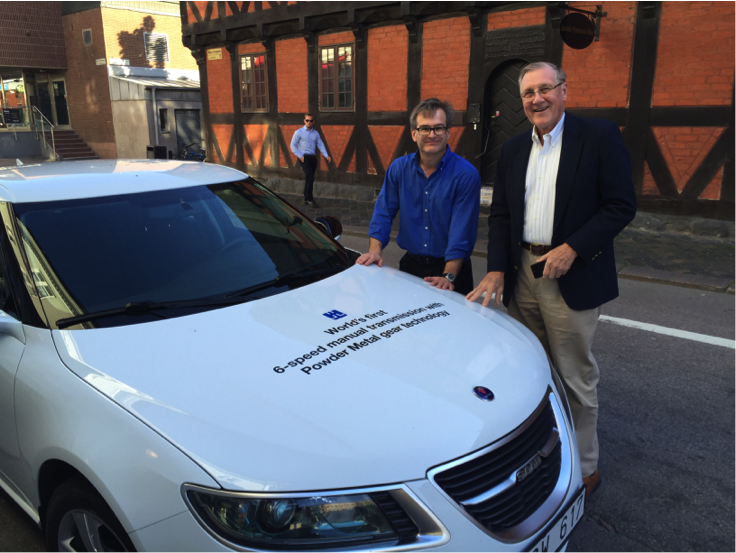Gear Innovations has extensively tested Convoloid gearing against classical involute baseline designs. Three of these tests are summarized below. Each of these three tests was completed using the original design of Convoloid1 with subsequent design improvements of later variants increasing the performance levels of its predecessors.
Test 1
The Gear Research Institute located at the Applied Research Laboratories of Penn State University tested Convoloid gearing in a four square test rig against classical involute designs.
Notably the only change in gearing from Convoloid to involute was the tooth form itself. The superiority of Convoloid gearing was confirmed and Convoloid rating protocols were accurately confirmed.
The common test data was:
| Ratio | 3/2 |
| Center Distance | 101.6mm |
| Face Width | 25mm |
| Input Torque | 373 nm |
| Speed | 2000rpm |
| Material Each Member | AISI 4140 at 28 to 32 HRC |
Test 2
The National Renewable Energy Laboratories (NREL) and Gear Innovations jointly designed, built, and tested a four square test rig and all test gearing putting a currently designed involute gearbox against its Convoloid retrofit. The basic gear housing was a Micon 108 kW gearbox design with a two-stage carburized, hardened, and ground set of gears at a total ratio of 27 to 1. The Convoloid gearbox was exactly matched to the involute baseline as far as center distances, face widths, materials, heat treatments and ratio. After 420 hours of testing at 56,000 NM of output torque (965 hours total test time) the involute gearbox exhibited growing micro-pitting in both stages whereas the Convoloid gearbox showed slight early micro-pitting but then continued the remainder of the test in remarkably stable tooth surface conditions. Convoloid design protocols for tip relief and lead corrections utilizing the LVR lead correction program were accurately confirmed.
Test 2




